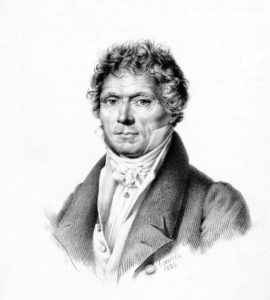
Soon after I opened up shop on Patreon, I was asked to comment on the music of Louise Farrenc (1804-1875). Not for the first time and certainly not for the last, I was brought up short . . . Louise who? I’m not sure I was brave enough to admit my ignorance, but as I recall I promised to look into her music.
I have indeed “looked into” her music and have been properly gobsmacked by what I have heard: symphonies of great power and pathos, dazzling piano music and, in particular, chamber music on par – on par – with that of her contemporary Felix Mendelssohn.
She was born Jeanne-Louise Dumont in Paris on May 31, 1804 and died there on September 15, 1875. The Dumont family was blessed with high-end artistic genetics, as Louise came from a long line well known sculptors and artists (which included several women painters); her older brother August-Alexandre Dumont (1801-1884) was a Prix de Rome-winning sculptor, whose work graces several important Parisian monuments to this day.
Like the aforementioned Felix Mendelssohn, Farrenc (her married name) was a child prodigy as both a visual artist and a musician. By her early teenage years, she was a profession-grade pianist and a composer of great promise. In 1819 – at the age of 15 – she began to study privately with the Czech-born composer Anton Reicha (1770-1836), then a professor at the Paris Conservatoire. (Those lessons had to be private as woman were not permitted to study at the Conservatoire.)

Reicha, a life-long friend of Beethoven’s, was the real-deal as both a composer and teacher. He was also a genuine innovator: his advocacy of polytonality, polyrhythm, and microtonality was accepted by exactly zero other nineteenth century composers. Unfortunately, when it came to his music, Reicha was his own worst enemy: because he refused to have his music published and thus circulated, it fell into immediate obscurity after his death. His reputation as a teacher, however, did not so fade from view, and his students included Franz Liszt, César Franck, Charles Gounod, and Hector Berlioz. (Berlioz, who tended to trash everything and everyone having to do with the Conservatoire, wrote in his Memoirs that: “Reicha seemed to care for nothing but the success of the young artists at the Conservatoire over whose studies he presided, and whom her taught with all possible care and attention. He grew fond of me at length.”)
This, then, was the person charged with completing Louise Farrenc’s compositional education. She worked intensively with Reicha until 1821, when she was married. After a hiatus of some two years, she returned to the Conservatoire and completed here studies with Reicha in 1825, at the age of 21.
A word about Louise Farrenc’s husband, Aristide Farrenc (1794-1865), for whom there is a special place in heaven. Ten years Louise’s senior, he was 27 years old when they were married; she was just 17. He was a professional flute player in the orchestra at Paris’ Théâtre-Italien (or Comédie-Italienne) and founder of a music publishing house called, likely enough, Éditions Farrenc. He himself had tried his hand at composing and realized that he had no talent for it. But he was able to recognize talent just fine, and he saw that his young wife had it in spades. Unlike so many of the men of his time, he actively encouraged his wife’s creative work and insisted on publishing her music. (According to an unnamed contemporary, “Modest, even timid, fleeing fame as diligently as other artists seek it, Madame Farrenc would have consigned her musical production to an external silence.”) Like I said, Aristide Farrenc earned a special place in heaven.
Louise Farrenc’s earliest published works – compositions for piano – date from 1825 (the bulk of her solo piano music was composed early in her career, between 1820 and 1839). The technical quality and originality of her piano music was, appropriately, recognized and celebrated. For example, her Air russe varié (“Variations on a Russia Air”), Op. 17, was reviewed by Robert Schumann in the Neue Zeitschrift für Musik. Schumann found the work “so sure in outline, so logical in development that one must fall under their [the variations’] charm, especially since a subtle aroma of romanticism hovers over them.” Farrenc’s “30 Etudes in all the major and minor keys” (“Trente études dans tous les tons majeurs et mineurs”), Op. 26 of 1838 were considered, at the time, to be on par – on par – with the piano etudes of Chopin and Liszt. Writing in La revue et gazette musicale in 1840, the critic Maurice Bourges claimed that Farrenc’s etudes were destined to become a “piano classic . . . not only to develop technique but also to mold taste.” In this, the directors of the piano program at the Paris Conservatoire agreed with Bourges, and in 1845 Farrenc’s were adopted as required works for all piano students.
Farrenc’s three symphonies date from the 1840s.
Her chamber music is wonderful, and is, collectively, the most important part of her compositional output.…
Continue reading, and see Dr. Bob’s FIVE prescribed recordings, only on Patreon!
